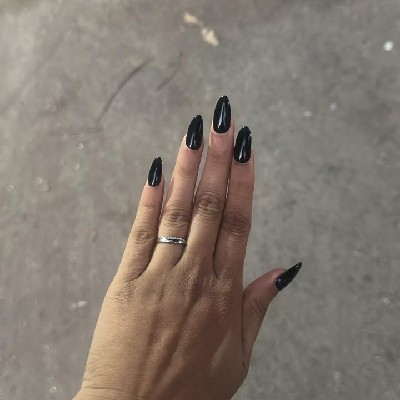
Harga REDRED
IDR
Harga RED (RED) dalam Rupiah Indonesia adalah -- IDR.
Harga koin ini belum diperbarui atau telah berhenti diperbarui. Informasi pada halaman ini hanya untuk referensi. Kamu dapat melihat koin yang listing di Pasar spot Bitget.
DaftarHarga live RED hari ini dalam IDR
Harga live RED hari ini adalah Rp0.00 IDR, dengan kapitalisasi pasar saat ini sebesar Rp0.00. Harga RED naik sebesar 0.00% dalam 24 jam terakhir, dan volume perdagangan 24 jam adalah Rp0.00. Tingkat konversi RED/IDR (RED ke IDR) diperbarui secara real time.
Berapa nilai 1 RED dalam Rupiah Indonesia?
Saat ini, harga RED (RED) dalam Rupiah Indonesia adalah Rp0.00 IDR. Kamu dapat membeli 1 RED dengan harga Rp0.00, atau 0 RED dengan harga Rp10 sekarang. Dalam 24 jam terakhir, harga tertinggi RED ke IDR adalah Rp22.08 IDR, dan harga terendah RED ke IDR adalah Rp22.08 IDR.
Info Pasar RED
Kinerja harga (24j)
24j
Terendah 24j Rp22.08Tertinggi 24j Rp22.08
Tertinggi sepanjang masa (ATH):
Rp3,689.7
Perubahan harga (24j):
+0.00%
Perubahan harga (7H):
+0.00%
Perubahan harga (1T):
-44.70%
Peringkat pasar:
--
Kapitalisasi pasar:
--
Kapitalisasi pasar yang sepenuhnya terdilusi:
--
Volume (24j):
--
Suplai beredar:
-- RED
Suplai maks.:
--
Tentang RED (RED)
加密货币RED的历史意义和关键特点
加密货币是一种数字资产,它在最近几年中变得非常流行。其中一种备受关注的加密货币是RED。下面将重点介绍RED加密货币的历史意义和关键特点。
加密货币RED诞生于区块链技术的发展之中。区块链是一种去中心化的技术,它允许信息的安全传输和存储,而无需依赖传统的中央机构。这种技术的出现为RED加密货币的诞生提供了基础。
RED加密货币的主要特点之一是其去中心化的性质。这意味着没有中央机构能够控制和操纵RED的发行和交易。这种去中心化的特点赋予了RED更高的安全性和保密性。
另一个RED加密货币的关键特点是其匿名性。区块链技术使得RED的交易记录可以被永久保存,但用户的身份和个人信息却可以保持匿名。这使得RED在保护用户隐私方面表现出色。
RED还具有全球化的特点。作为一种数字货币,RED可以在世界范围内进行快速、便捷的交易。这使得RED成为一种方便的支付工具,尤其是在跨境交易方面。
另外,RED加密货币的可分割性也是其重要的特点之一。相比传统货币,RED可以被分割成更小的单位,从而满足不同交易需求。
总的来说,加密货币RED具有历史意义和多种关键特点。它的去中心化、匿名性、全球化以及可分割性使其成为一种独特和有价值的数字货币。在未来,RED加密货币有望在全球范围内发展壮大,并为用户提供更安全、方便的交易体验。
Tampilkan lebih banyak
Prediksi harga RED
Berapa harga RED di 2026?
Di tahun 2026, berdasarkan prakiraan tingkat pertumbuhan tahunan sebesar +5%, harga RED (RED) diperkirakan akan mencapai Rp0.00; berdasarkan perkiraan harga untuk tahun ini, imbal hasil investasi kumulatif dari berinvestasi dan menyimpan RED hingga akhir tahun 2026 akan mencapai +5%. Untuk detail lebih lanjut, lihat Prediksi harga RED untuk 2025, 2026, 2030-2050.Berapa harga RED pada tahun 2030?
Pada tahun 2030, berdasarkan prakiraan tingkat pertumbuhan tahunan sebesar +5%, harga RED(RED) diperkirakan akan mencapai Rp0.00; berdasarkan perkiraan harga untuk tahun ini, imbal hasil investasi kumulatif dari berinvestasi dan menyimpan RED hingga akhir tahun 2030 akan mencapai 27.63%. Untuk detail lebih lanjut, lihat Prediksi harga RED untuk 2025, 2026, 2030-2050.
Promosi populer
Cara Membeli RED(RED)

Buat Akun Bitget Gratis Kamu
Daftar di Bitget dengan alamat email/nomor ponsel milikmu dan buat kata sandi yang kuat untuk mengamankan akunmu.

Verifikasi Akun Kamu
Verifikasikan identitasmu dengan memasukkan informasi pribadi kamu dan mengunggah kartu identitas yang valid.

Konversi RED ke IDR
Pilih mata uang kripto untuk diperdagangkan di Bitget.
FAQ
Berapa harga RED saat ini?
Harga live RED adalah Rp0 per (RED/IDR) dengan kapitalisasi pasar saat ini sebesar Rp0 IDR. Nilai RED sering mengalami fluktuasi karena aktivitas 24/7 yang terus-menerus di pasar kripto. Harga RED saat ini secara real-time dan data historisnya tersedia di Bitget.
Berapa volume perdagangan 24 jam dari RED?
Selama 24 jam terakhir, volume perdagangan RED adalah Rp0.00.
Berapa harga tertinggi sepanjang masa (ATH) dari RED?
Harga tertinggi sepanjang masa dari RED adalah Rp3,689.7. Harga tertinggi sepanjang masa ini adalah harga tertinggi untuk RED sejak diluncurkan.
Bisakah saya membeli RED di Bitget?
Ya, RED saat ini tersedia di exchange tersentralisasi Bitget. Untuk petunjuk yang lebih detail, bacalah panduan Bagaimana cara membeli red kami yang sangat membantu.
Apakah saya bisa mendapatkan penghasilan tetap dari berinvestasi di RED?
Tentu saja, Bitget menyediakan platform perdagangan strategis, dengan bot trading cerdas untuk mengotomatiskan perdagangan Anda dan memperoleh profit.
Di mana saya bisa membeli RED dengan biaya terendah?
Dengan bangga kami umumkan bahwa platform perdagangan strategis kini telah tersedia di exchange Bitget. Bitget menawarkan biaya dan kedalaman perdagangan terdepan di industri untuk memastikan investasi yang menguntungkan bagi para trader.
Harga mata uang kripto terkait
Harga Ethereum (IDR)Harga Worldcoin (IDR)Harga dogwifhat (IDR)Harga Kaspa (IDR)Harga Smooth Love Potion (IDR)Harga Terra (IDR)Harga Shiba Inu (IDR)Harga Dogecoin (IDR)Harga Pepe (IDR)Harga Cardano (IDR)Harga Bonk (IDR)Harga Toncoin (IDR)Harga Pi (IDR)Harga Fartcoin (IDR)Harga Bitcoin (IDR)Harga Litecoin (IDR)Harga WINkLink (IDR)Harga Solana (IDR)Harga Stellar (IDR)Harga XRP (IDR)
Di mana saya dapat membeli RED (RED)?
Bagian video — verifikasi cepat, trading cepat

Cara menyelesaikan verifikasi identitas di Bitget dan melindungi diri kamu dari penipuan
1. Masuk ke akun Bitget kamu.
2. Jika kamu baru mengenal Bitget, tonton tutorial kami tentang cara membuat akun.
3. Arahkan kursor ke ikon profil kamu, klik "Belum diverifikasi", dan tekan "Verifikasi".
4. Pilih negara atau wilayah penerbit dan jenis ID kamu, lalu ikuti petunjuknya.
5. Pilih "Verifikasi Seluler" atau "PC" berdasarkan preferensimu.
6. Masukkan detail kamu, kirimkan salinan kartu identitasmu, dan ambil foto selfie.
7. Kirimkan pengajuanmu, dan voila, kamu telah menyelesaikan verifikasi identitas!
Beli RED seharga 1 IDR
Paket sambutan senilai 6200 USDT untuk pengguna baru Bitget!
Beli RED sekarang
Investasi mata uang kripto, termasuk membeli RED secara online melalui Bitget, tunduk pada risiko pasar. Bitget menyediakan cara yang mudah dan nyaman bagi kamu untuk membeli RED, dan kami berusaha sebaik mungkin untuk menginformasikan kepada pengguna kami secara lengkap tentang setiap mata uang kripto yang kami tawarkan di exchange. Namun, kami tidak bertanggung jawab atas hasil yang mungkin timbul dari pembelian RED kamu. Halaman ini dan informasi apa pun yang disertakan bukan merupakan dukungan terhadap mata uang kripto tertentu.
Sumber RED
Peringkat RED
4.4
Kontrak:
0x7696...27aeb2f(Ethereum)
Insight Bitget

Blockchain_Matrix
2025/12/07 05:56
$RED Pullback Stabilizing After Strong Pump
Trade Setup (Long)
Entry Zone: 0.2831 – 0.2840
Target 1: 0.2930
Target 2: 0.3034
Stop-Loss: 0.2743
$RED has cooled off after a sharp vertical pump and is now stabilizing at support. If buyers hold this zone, a recovery toward 0.3034 is likely.
RED-0.23%

PRAWIN09
2025/12/06 15:09
Crypto Events & Catalysts – December 7, 2025
(Everything you need to watch today)
1/ Quiet day on the surface, but several things brewing:
• No major token unlocks today (yesterday had $RED, tomorrow has bigger ones)
• BTC sitting at ~$92K, macro eyes glued to next week’s Fed (Dec 10)
2/ Doodles × Claynosaurz collab reveal expected today
High chance of NFT drop or mint teaser. Blue-chip NFT volume already +12% this week. Watch $DOOD and OpenSea flows.
3/ 4:00 PM UTC – Unnamed project CEO/CTO/CGO Live Spaces
“2025 recap + 2026 roadmap”
These sessions often pump mid-caps 5-15%. Stay alert for surprise guests.
4/ METAVSUMMIT all-day (Crypto × Metaverse × AI)
500+ attendees, panels on tokenization & AI agents. Narrative fuel for $TAO, $RENDER, $NOS and metaverse tokens.
5/ MegaETH & Stable mainnet hype building hard
Both rumored for Dec 8 launch. Pre-deposits already >$500M combined. L2 rotation incoming?
6/ Sentiment check:
Fear & Greed = 23 (Extreme Fear)
Perfect spot for a weekend bounce if volume returns.
Mark your calendar, set alerts, and have a great Saturday frens ⚡️
What are you watching today? Drop it below 👇
RED-0.23%
BTC-0.16%

_FortuneCrypto
2025/12/06 06:48
🔮 Trending Crypto Events by Finarc 🌟
🗓️ Event: 5.54MM Token Unlock
📅 Date: December 06, 2025
💰 Coin: RedStone (Pre-Market) ( $RED )
🗓️ Event: Solana Economic Zone
📅 Date: December 07, 2025
💰 Coin: General Event ( $CRYPTO ), deBridge ( $DBR ), ( $IO ),( $JUP ), ( $SOL )
RED-0.23%
JUP-1.67%

Crypto_Influencer
2025/12/05 04:58
Market is volatile and Red Stone Chart is making red candles. Want to check out?
RedStone is a blockchain oracle provider designed to deliver gas-efficient, tamper-proof, and cross-chain data feeds to support DeFi protocols across various blockchain networks. Its modular architecture enables rapid integration with different chains and use cases, making it adaptable to evolving blockchain technologies. By optimizing data delivery, RedStone aims to enhance efficiency while maintaining security and reliability for DeFi applications.
RED serves as the native utility token within the RedStone ecosystem, playing a central role in staking and payments. Data providers operating within the oracle network must stake RED tokens to ensure the integrity and accuracy of the data they provide. Additionally, any holder can stake RED tokens in RedStone AVS on EigenLayer, contributing to the network’s security. At launch, RED will also be supported by partner AVS as a Liquid Restaked Token, further expanding its utility.
As a payment mechanism, users of RedStone oracle feeds compensate stakers for data consumption using major cryptocurrencies such as ETH, BTC, SOL, and USDC. These transaction fees are directed toward staked RED, reinforcing the ecosystem’s sustainability. #RedStone $RED
RED-0.23%
BTC-0.16%

ScalpingX
2025/12/05 04:31
$RED - Mcap 80.21M$ - 86%/ 12K votes Bullish
SC02 M5 - pending Short order. Entry lies within the HVN and is not affected by any weak zone, the projected stop-loss is around 1.22%. The downtrend is in the 214th cycle, with a decline amplitude of 9.64%.
#TradingSetup #CryptoInsights
RED-0.23%
Harga koin yang baru listing di Bitget








